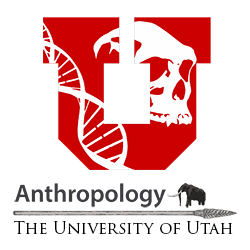The Goldilocks Zone for maize agriculture and the settlement and abandonment of the West Tavaputs Plateau
Authors:
Peter M. Yaworsky, Kenneth B. Vernon, Weston C. McCool, Isaac A. Hart, Jerry Spangler, Brian F. Codding
Abstract:
Between 2100 and 500 BP, maize farming spread throughout the American Southwest, driving changes in land use patterns and relative increases in the number of archaeological sites, which is commonly interpreted as increases in population. In the context of the Southwest, with its variable topography and limited water sources, the locations suitable for productive maize agriculture are limited. Higher elevation locations often have a greater abundance of water, both in the form of precipitation and perennial water sources but lack the growing season lengths required for maize farming. Lower elevation locations have the long growing seasons required for maize, but often have higher evaporation rates corresponding with higher temperatures, and thus decreased soil moisture retention. The relationship between elevation and maize agriculture is well recognized, and locations where both growing season length and moisture requirements can be met serve as a Goldilocks Zone in which maize farming is possible. Here, we use a regional approach to model the Goldilocks Zone for maize farming in Utah, and then contextualize patterns of settlement and abandonment on the West Tavaputs Plateau (WTP) in east-central Utah. We use archaeological sites with direct evidence of maize cultivation, modern growing degree days estimates, and modern estimates of moisture abundance to bracket the prehistoric maize farming niche in Utah. Then, we apply the model to archaeological data from the WTP to test hypotheses derived from the Ideal Free Distribution model about the effects population and precipitation changes had on prehistoric land use patterns of settlement and abandonment, and whether the patterns of settlement and abandonment differ from one another. We find that a) population drives land use patterns in the WTP, but not in the way we originally hypothesized, suggesting there is an important decision variable missing from our model, which may pertain to the specific topographic setting of the WTP and the distribution of its water sources, b) precipitation has no effect on land use patterns suggesting that maize agriculture on the WTP was dependent on irrigation, and c) that patterns of settlement and abandonment seem to mirror each other.
This publication can be viewed here

